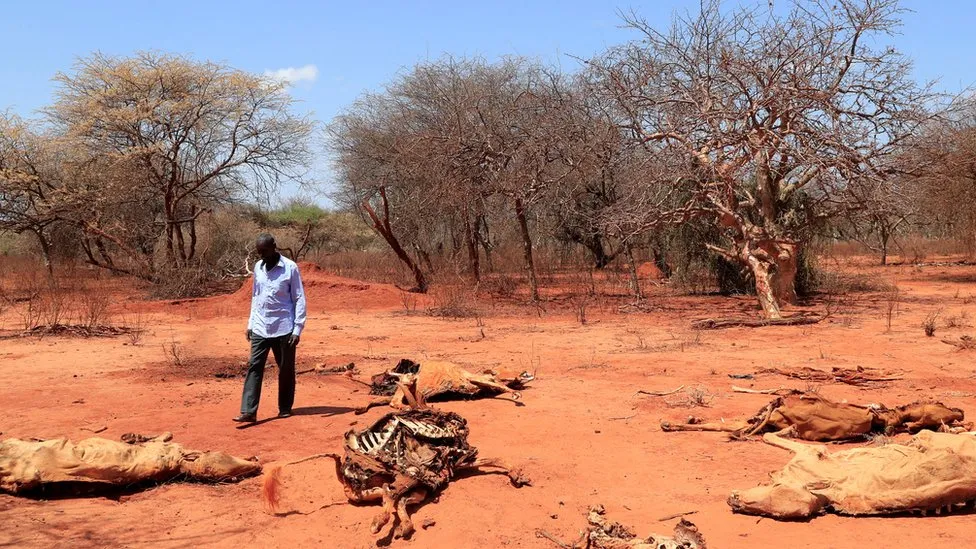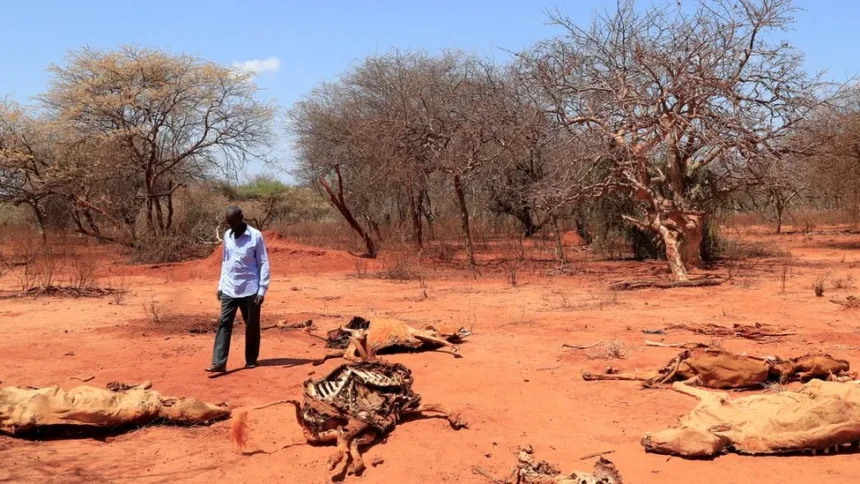By Kalkidan Yibeltal & Danai Nesta Kupemba

Thousands of people have fled their homes because of the drought
More than 50 people have died in Ethiopia’s northern Tigray and Amhara regions amid drought and an aid freeze, local officials have told the BBC.
The Horn of Africa has had five failed rainy seasons since 2019, according to the UN.
The US and UN suspended aid earlier this year after allegations of theft, worsening the humanitarian crisis.
Tigray is recovering from a two-year civil war which ended a year ago, while a conflict has erupted in Amhara.
About 46 people died in the town of Yechila in Tigray, while six died in the neighbouring Amhara region of Wag Hemra, because of food shortages, the officials said.
Over 4,000 cattle have died because of severe drought.
As northern Ethiopia battles drought, the country’s southern and eastern regions have been deluged by flash floods.
In a statement on X, formerly known as Twitter, the UN said that more than 370,000 people had fled their homes because of the floods.
At least 43 people have been killed by the flooding and landslides in the eastern Somali region.
During the war in Tigray, the region was cut off from humanitarian aid, leading to an unknown number of deaths. But it has been estimated that about 500,000 people may have died as a result of war, lack of medical supplies and hunger amid what were described as “famine-like conditions”.
The conflict ended after the Ethiopian government and the Tigray People’s Liberation Front (TPLF) signed a peace deal brokered by the African Union (AU).
After the conflict ended, there was a steady flow of aid until June, when the US and UN paused humanitarian assistance, staying it had been systematically stolen by corrupt officials.
The US says widespread food deliveries will be resumed in December after significant reforms had been made to ensure that the supplies reached those who needed it most.
Across East Africa, heavy rains and flash flooding have killed 130 people in Ethiopia, Kenya and Somalia in recent weeks, according to the Associated Press.
The UN has described them as a “once-in-a-century event”.
In a statement, Fati N’Zi-Hassane, Oxfam in Africa Director said, the region was “going from one disaster to the next as climatic shocks become more frequent and intense”.
Somalia has been especially hit hard by the floods, after suffering from catastrophic droughts in recent years. The worst hit town is Beledweyne, where the Shabelle River burst its banks.
The El Nino phenomenon has greatly affected East Africa. It is caused by warming in the Pacific Ocean and is linked to flooding, cyclones, drought and wildfires.
Not all droughts or floods are due to climate change, but excess heat in the atmosphere is drawing more moisture out of the earth and making droughts worse, while a warming atmosphere caused by climate change makes extreme rainfall more likely.
The world has already warmed by about 1.2C since since the industrial era began and temperatures will keep rising unless governments around the world make steep cuts to emissions.
Source: BBC


Leave a Reply